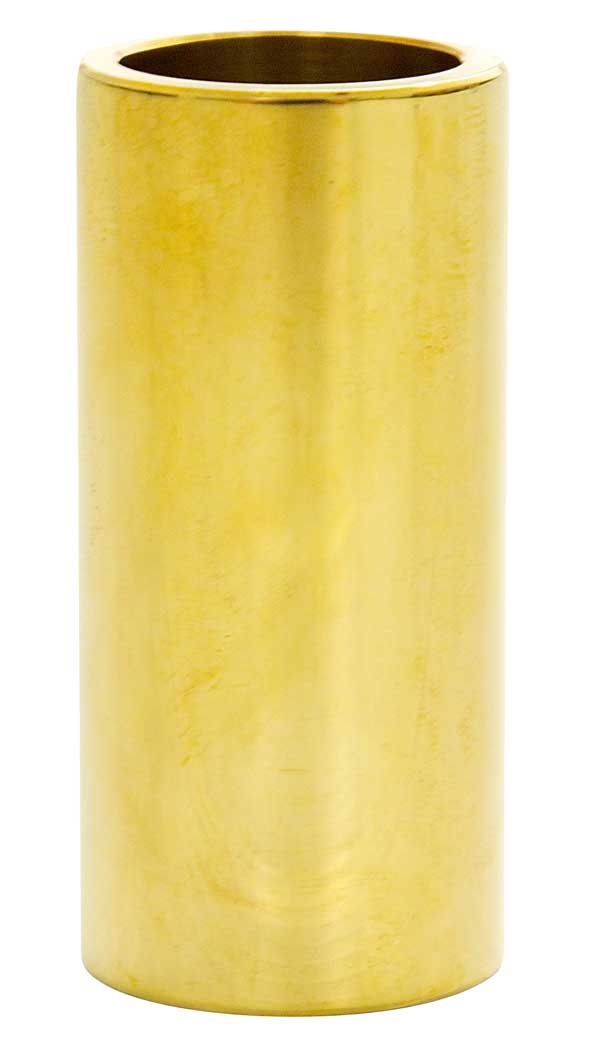
Types of Slides
There are several types of slides which can be used for slide guitar. The slide you decide to use can be dependent upon the type of guitar you use and how it is set up. Only by experimenting with different combinations will you find a slide and guitar action you are happy with.
All slides should have a smooth surface for a clean sustaining sound from the string as well as ease of sliding. The slide must have the correct inside diameter so it is not too tight or too loose on the little finger. The slide must be long enough to cover the width of the strings and the thickness of the material will affect the sustain of the note.
If a slide is too thin you may find it will produce a weak, tinny sound but if the walls of the slide are too thick, it may be too heavy and difficult to control.


Slides can be purchased at most music stores but if you have trouble finding a slide you are happy with, I suggest trying a store which sells steel or brass tubing. A short length of steel or brass tubing once polished will provide an adequate slide.
The Metal Slide

Metal Slide
Slides can be purchased at most music stores but if you have trouble finding a slide you are happy with, I suggest trying a store which sells steel or brass tubing. A short length of steel or brass tubing once polished will provide an adequate slide. Remember if the wall of the metal slide is too thin it may sound too tinny.
The Glass Slide

Glass Slide
The glass slide is the softest and smoothest sounding slide. Though it can be used in blues or rock, you may find it is more useful in a lighter style of music.
The Brass Slide

Brass Slide
The tone of the brass slide can be described as somewhere between the metal and the glass slide. Once again the thickness of the walls will affect the sound.
Other Slides

Other Slides
Bottle necks, glass jars or anything you wish to use. There are no restrictions when you may have to improvise.